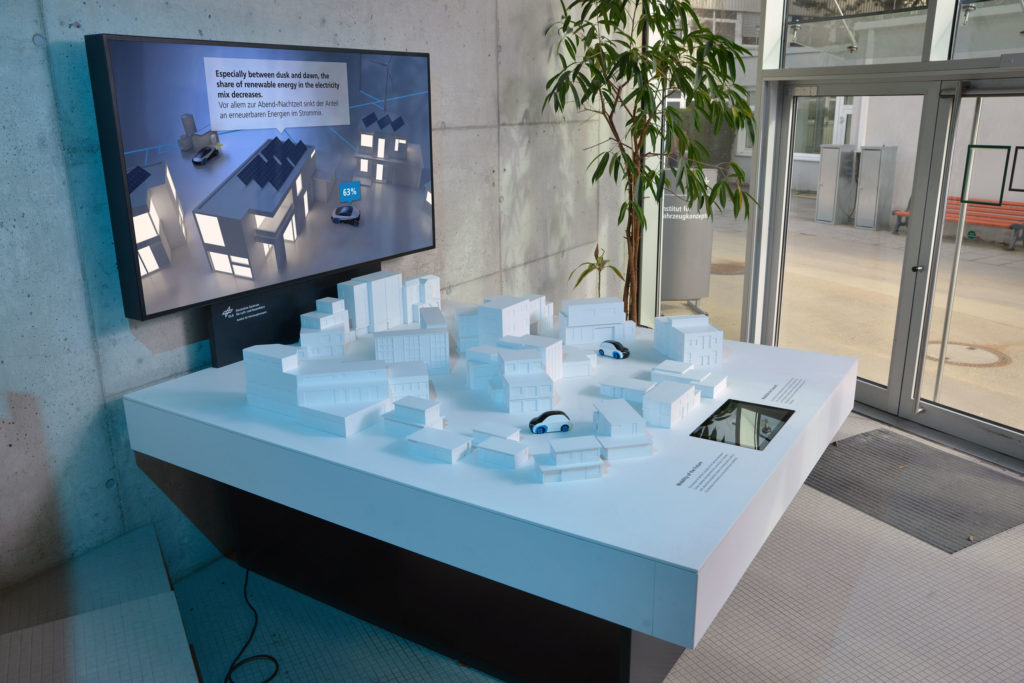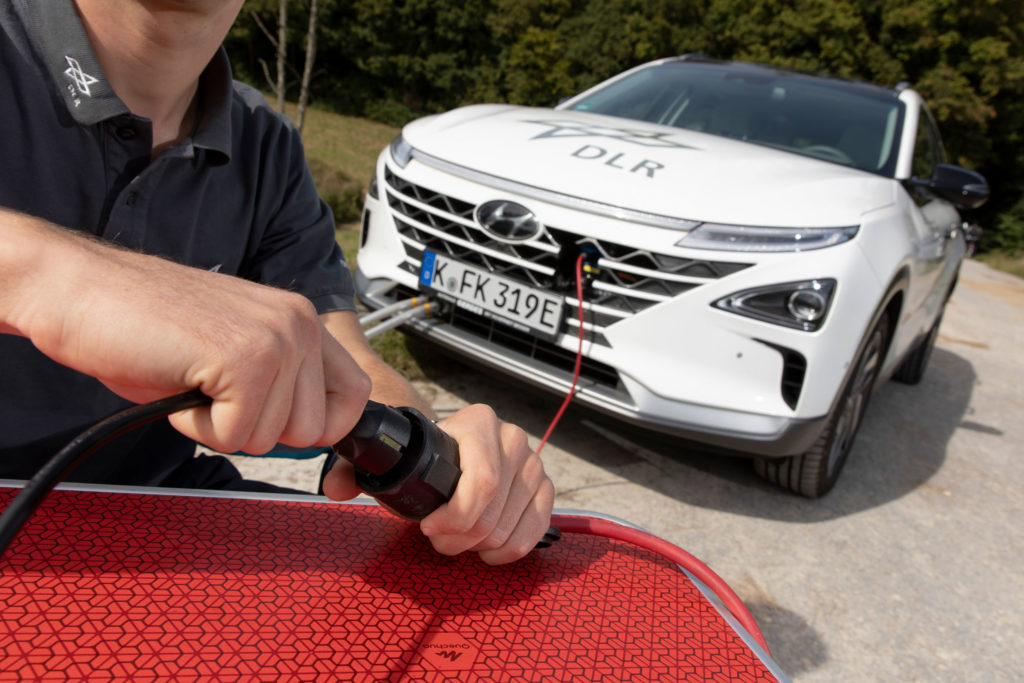How could it work in everyday reality?
Ingenious solutions for linking the energy supply and mobility sectors are essential for the success of the energy and mobility transitions. Battery- and fuel-cell-powered vehicles can feed electricity and heat into stationary distribution networks if necessary. They can also be used as a mobile source of power or heating, such as on campsites or at events. This type of local power supply could also be provided in emergencies or after earthquakes or floods.
This interactive DLR model uses the charging status of an electric car to show how coupling these sectors together could work in everyday life – charging stations at home charge the vehicle’s batteries or feed electricity back into the grid as needed. A smart charging management system controls the individual charging currents. This prevents the power grid from being overloaded. Fast charging is vital for people on the go – for instance, electric vehicles covering long distances along motorways. In cities, a large number of electric vehicles can be charged within a short time at fast-charging stations with high charging capacities. Mobile charging stations allow electric vehicles to be charged in places that have no electricity connection of their own. This improves the charging infrastructure for battery electric vehicles across the board. Rural areas can greatly benefit from this.
In the future, heavy construction site vehicles should be able to use a hydrogen expansion machine to handle longer operations without refuelling. This uses the high pressure of the hydrogen from the storage facility and reduces it for the fuel cell. The energy released during this expansion process is converted into electricity by a generator on the vehicle. This electricity can in turn be used in an electric propulsion system to drive a hydrogen-powered vehicle.
Links:
German Aerospace Center (DLR)
Institute of Vehicle Concepts
Dr. Michael Schier | Email Michael.Schier@dlr.de


